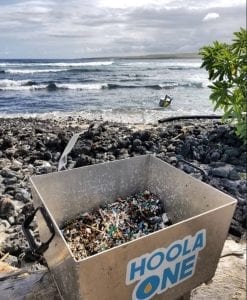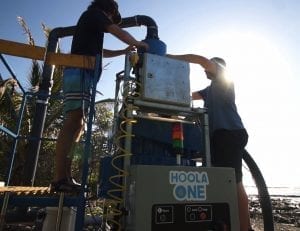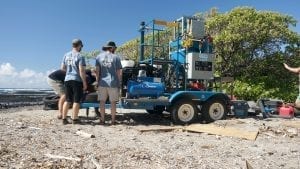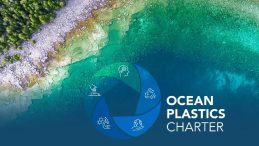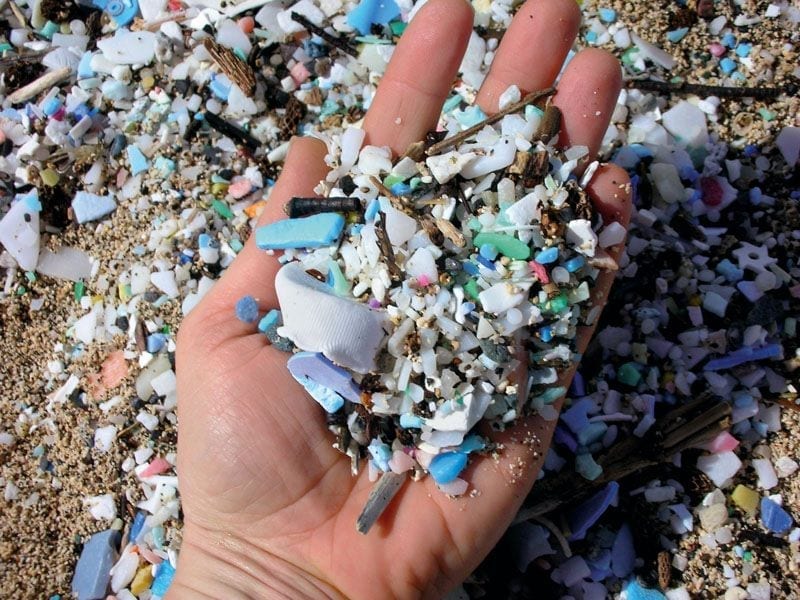
Lately in the news, we’ve heard that microplastics are everywhere – in our food, in our environment, and even in snow falling from the sky. But one of the more common places to find microplastics is a beach.
Though plastic is recycled, landfilled, or incinerated, a significant amount of plastic ends up in the ocean, carried by wind and water. After floating on crashing waves for years and years, plastics break down into smaller and smaller pieces, until they become microplastics. Eventually those plastics wash back up on our shores.
When we clean beaches we can pick up the bottles and containers easily, but microplastics are harder to collect.
Think about it for a moment. How would you clean microplastics from a beach?
Sure they can be easy to spot, but some can be as small as a grain of sand. Would you sit down and pick them out, particle by particle? I mean you could, but that would take a really long time.
So that’s it, there’s no easy solution right?
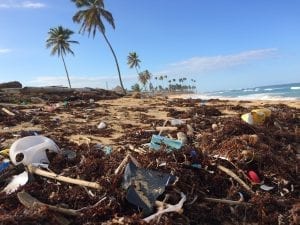

Punta Cana, Domincan Republic / Photograph by Dustan Woodhouse on Unsplash
Microplastic removal with Hoola One Technologies
In 2017, 12 mechanical engineering students decided to tackle this issue and came up with a solution. They designed a plastic removal device that can vacuum up a material such as sand, and separate the more buoyant plastic. Amazing idea, right?
Fast forward two years, and three of those students came together to found Hoola One, taking their innovation to the next level: Jean-Felix Tremblay, Samuel Duvai, and Jean-David Lantagne. For personal reasons, Samuel was not able to keep going with Hoola One. Anne-Sophie Lapointe replaced him, which brought a wider range of experience to the team since her business background complemented the group of engineers.
Although they’ve achieved notable success, Hoola One keeps looking to improve and become more effective. They expanded their team with Anne-Sophie joining as their Chief Development Officer, and they’re also developing a more efficient version of their plastic removal device.
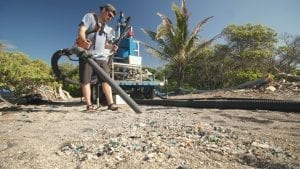

Plastic removal device vaccuming microplastics, Hoola One Technologies.
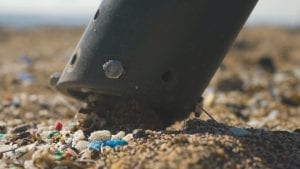

Hoola One technology removing microplastics from a beach.
“This is Canadian, award-winning, and answers the ever growing question of, ‘What can we do with microplastics?'”– Adrian Midwood, Executive Director at Plastic Oceans Canada
How does this plastic removal device work?
Anne-Sophie explained the basics of the process, “the machine sucks up the sand into a tank and then by buoyancy allows for the sand to be redeposited on the beach. Then everything remaining goes into the natural matter separator.”
“At the end, only the plastic is collected, which helps the restoration of ecosystems, reduces the quantity of matter collected and makes it easier to recycle the plastic since it isn’t mixed with other matter such as wood or algae.”
How is Hoola One’s technology different from other beach cleaning devices?
Hoola One’s machine collects much smaller particles. Their buoyancy method enables the collection of microplastics as small as 50 um (micrometers)!
Other benefits include: collecting both micro and macroplastics while keeping the organic matter on the beach, and reaching hard-to-access beaches with rugged terrain, where other devices fail.
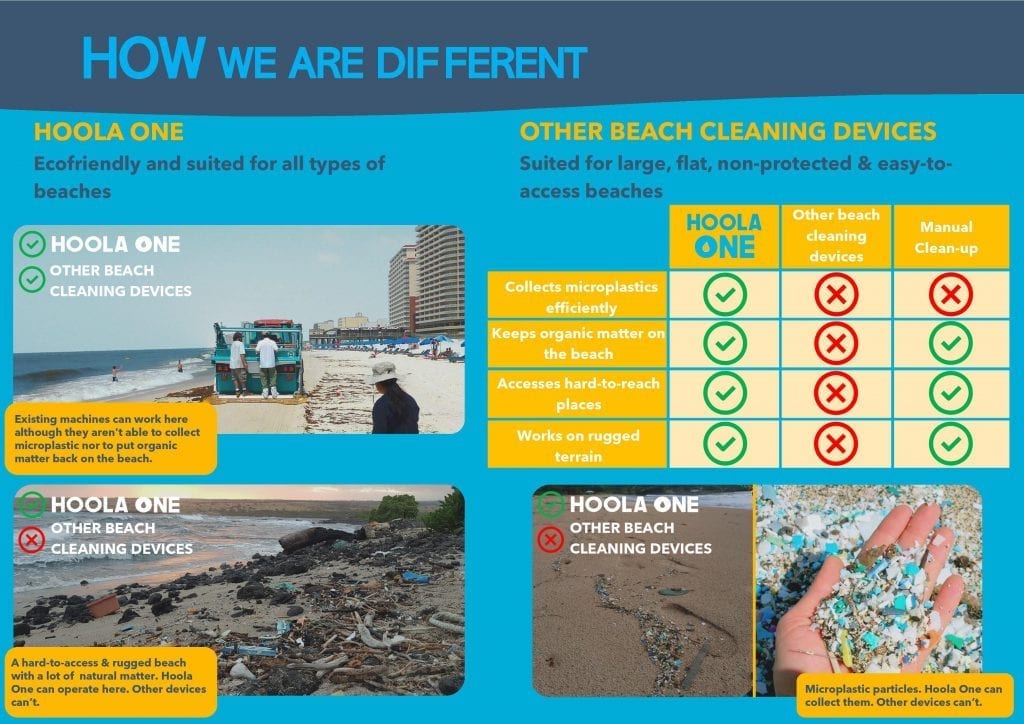

Comparison infographic, Hoola One Technologies.
As an innovative solution to cleaning plastic from our beaches, it’s no wonder Hoola One is an award-winning technology. Since 2018 they’ve won six awards recognizing their brilliant work in engineering, entrepreneurship, and innovation. We’re excited to see what successes come their way as we progress further into the new year. Hopefully cleanups around the world will feature this local Canadian technology in the near future.
Fingers crossed that we will be able to work alongside Hoola One on our home shores later this year! Together with Hoola One, we want to restore the ecosystems of Halifax beaches. We may even have the opportunity to film a short documentary featuring Hoola One’s innovative work.
Are you interested in learning more about Hoola One? Follow their journey on social media or explore their website to see how they’re working to restore ecosystems affected by plastic pollution.
Microplastics are everywhere, but what can we do?
Innovate, find solutions, and make a difference.
